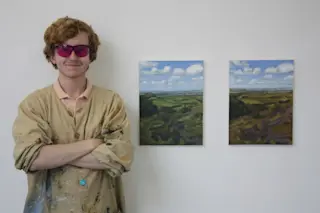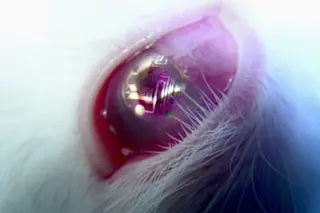The artist Adam Fenton standing with a painting he made without Oxy-Iso glasses (left) and with the glasses (right). Credit: Adam Fenton Being color blind never stopped Adam Fenton from painting. The London-based artist has built his career upon landscape paintings and color studies despite being one of the millions of men with some form of red-green color blindness. But when Fenton heard about a new type of glasses that could correct for color-blind vision, he was eager to see what difference they could make in both his art and his daily life. One of Fenton's friends sent him an article about Oxy-Iso glasses; a lens technology that enhances the wearer's vision of oxygen levels in blood and highlights certain color hues that would normally be invisible for people with red-green colorblindness. Researchers at 2AI Labs originally invented and sold the glasses under the brand name O2AMP with the idea ...
Artist Tests Color-Blind Correction Glasses
Explore how Oxy-Iso glasses transform color perception for artists like Adam Fenton, enhancing landscape paintings despite color blindness.
More on Discover
Stay Curious
SubscribeTo The Magazine
Save up to 40% off the cover price when you subscribe to Discover magazine.
Subscribe





